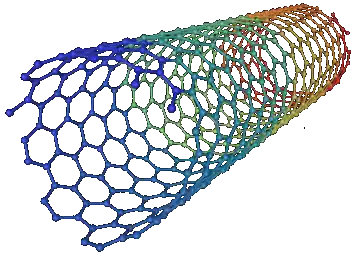افشین رشید
اُستادیار ؛ عضو هیات علمی دانشگاه آزاد اسلامی واحد علوم و تحقیقات تهران
615 یادداشت منتشر شدهWeakening of electron transfers and the presence of dispersant when dispersing CNTs multilayered carbon nanotubes

Note: CNTs multi-layered carbon nanotubes have many impurities in some samples, such as graphene polyhedral particles, amorphous carbon and Catalyst particles.The optical absorption of these impurities is related to the spectrum and for quantitative evaluation, the field is removed. < a i=6>The assimilation of the background is necessary, which in this caseis not possible and quantitative analysis will be accompanied by errors . The third problem is caused by the presence of a dispersant, which spreads when dispersing a nanotube with multiple layers of CNTs. Its presence causes There is a mistake in the quantitative detection of SWCNT in the state
When functional groups are covalently placed on CNTs multilayer nanotubes, absorption peaks NIR-VIS-UV absorption spectroscopy has two important uses: the rate of covalent reactions and selectivity towards nanosheets /span> ) or saturation of the conduction band like (doping-n) becomes.leading to the preparation of valence electrons like (dopingPNon-covalent doping or molecular absorption different.

These non-covalent interactions can affect the intensity of absorption peaks . When doping, electron donors such as (Cs,K) or electron acceptors very similar changes in the spectrum (- Br2) as create NIR-vis-UV and both cause weakening of electron transfers. Absorption spectroscopy should be used to estimate the abundance of metal and semiconductor species by comparing the intensity of the corresponding peaks; because the position of these resonance peaks depends on chirality and diameter. For qualitative analysis, absorption spectroscopy is excellent because it shows the overall composition of the sample; But the quantitative evaluation depends on several possible reasons adsorption of nanotubes depends on (m,n) .

The ratio of extinction coefficients for metal-to-semiconductor SWCNTs is reported to be +0.352, which should be independent of -0.009 separation method or starting materials. But the extinction coefficient values of SWCNTs reported in scientific sources are not consistent, and better measurement methods are still needed to determine the extinction coefficient of different (m,n) nanotubes. Secondly, the strong π absorption in the short wavelength region causes that the resonance transitions are not separate. In addition, the complexity related to the overlap of the peaks is problematic. As a result, the existence of a large number of SWCNTs with different (m,n) with unknown abundance, along with various errors associated with data analysis, makes it difficult to quantitatively evaluate the concentration of the special species (m,n) in the sample, and only estimated data It comes

Conclusion :
CNTs multilayer carbon nanotubes in some samples have many impurities, such as polyhedral graphene particles, amorphous carbon and catalyst particles. The optical absorption of these impurities is related to the spectrum and for quantitative evaluation it is necessary to remove the background absorption background , which is not possible in this case and the quantitative analysis will be accompanied by errors . The third problem is caused by the presence of a dispersant that spreads when dispersing the multi-layered nanotubes of CNTs . Its presence causes confusion in the quantitative detection of the amount of SWCNTs in the state.